#Gokoku
Text
源起於神聖、莊嚴的護國神社,現在則成為了新人結婚與幸福祈願之所在,更是為守護新潟縣民日常的總鎮護,同時也是座靠近日本海的絕美神社的「新潟県総鎮護・新潟縣護國神社」!
#巡日#旅行#出國#雪國#神社#和洋式#結婚式場#新潟縣護國神社#西船見町#新潟#新潟自由行#巡日旅行攝#Japan#Travel#Shrine#Gokoku#にいがた#にほんこく#RoundtripJp
1 note
·
View note
Text

Gokoku-Ji Cemetery
Bunkyō, Tokyo, Japan
#photographers on tumblr#architecture#nature#cemeteries#tokyo#japan#autum#fall#gokoku ji cemetery#graveyard#graves#tombstones#tombs#bunkyo#halloween#spooky season#original photographers#original photography
88 notes
·
View notes
Video
youtube
Walking from Ikebukuro to Gokoku-ji in Tokyo, Japan.
7 notes
·
View notes
Photo
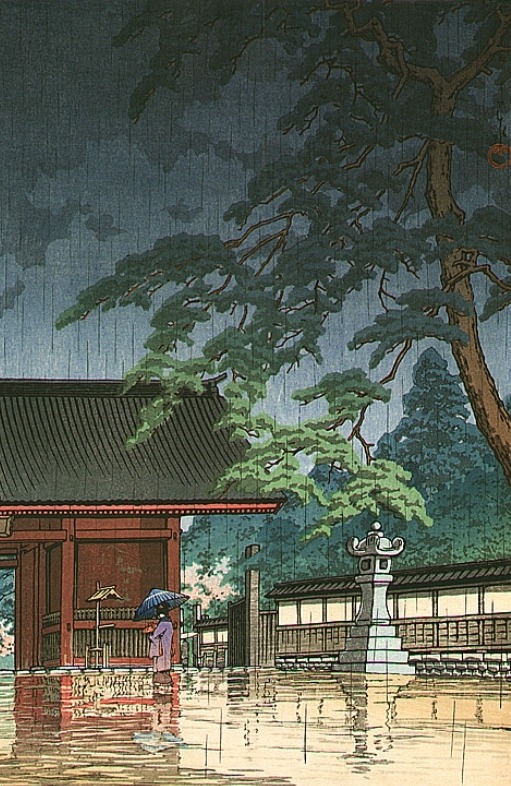
6 notes
·
View notes
Text
Hiroshima Gokoku Schrein
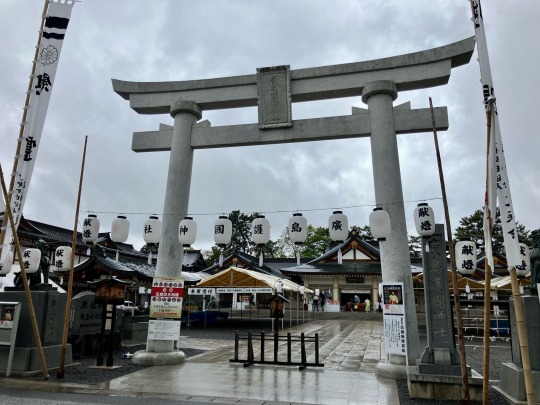

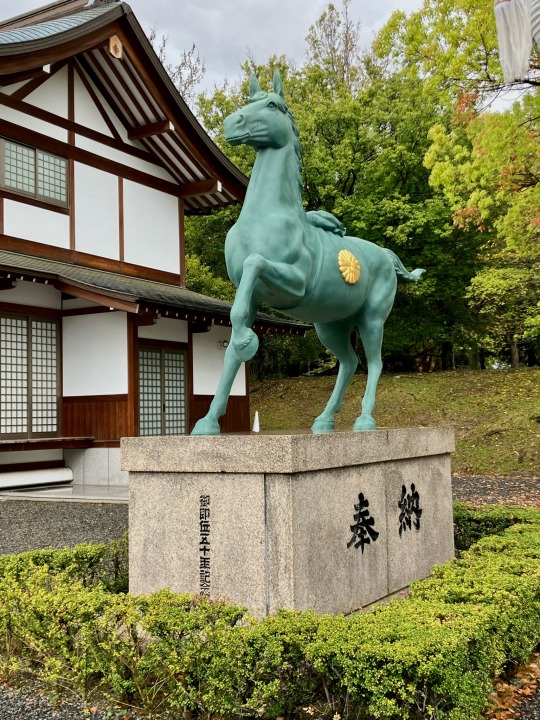


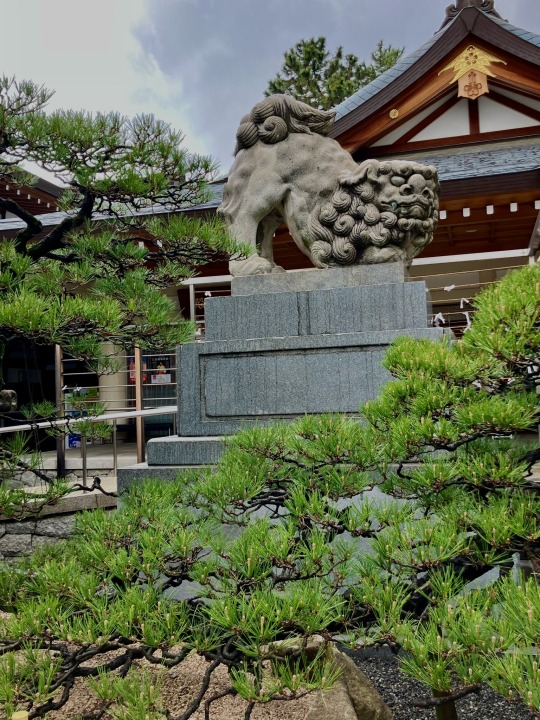
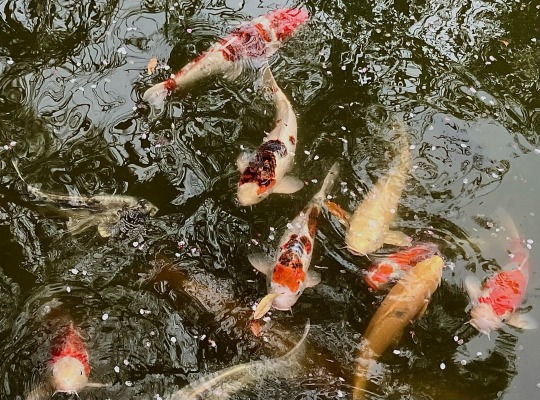
#7.4.23#Hiroshima#Gokoku Schrein#Fisch#Koj#Barsch#Tempelstempel#Stempelhopping#sammeln#Goshuin#dem Regen fast entflohen#schöner Tag#urlaub#japan
3 notes
·
View notes
Photo

Alchemy of Souls' Lee Jae-wook, awakening in crisis ..Heavy rain in spleen eyes
#Alchemy of Souls#Jung So-min#Lee Jae-wook#Plateau#Choi Ji-ho#Kyoto Ryozen Gokoku Shrine#SteelSeries#Lean on Me
9 notes
·
View notes
Photo
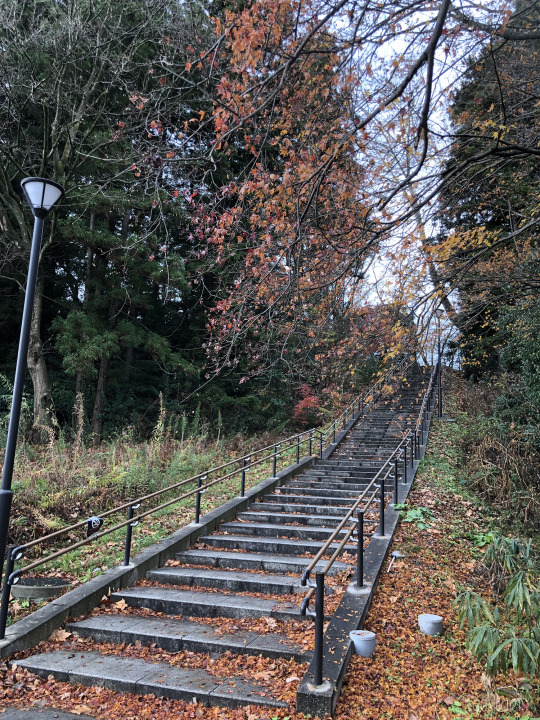

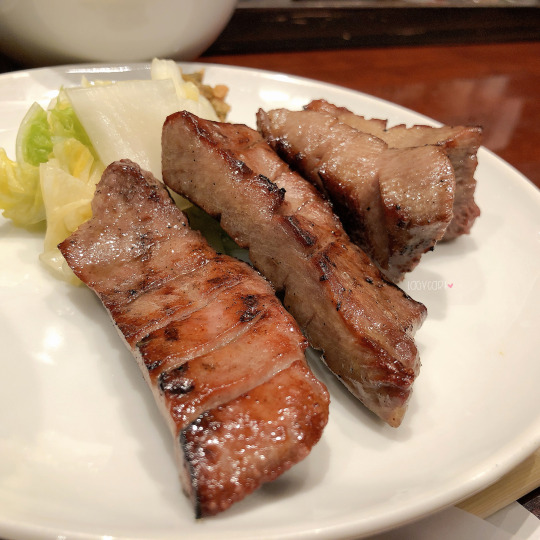

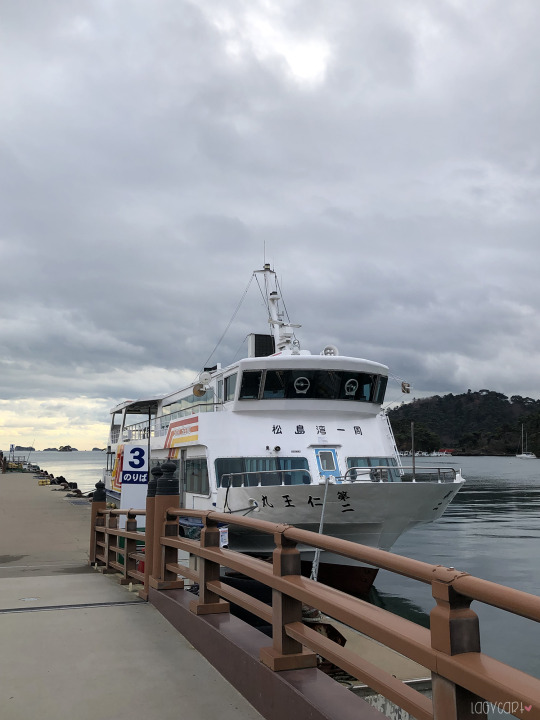

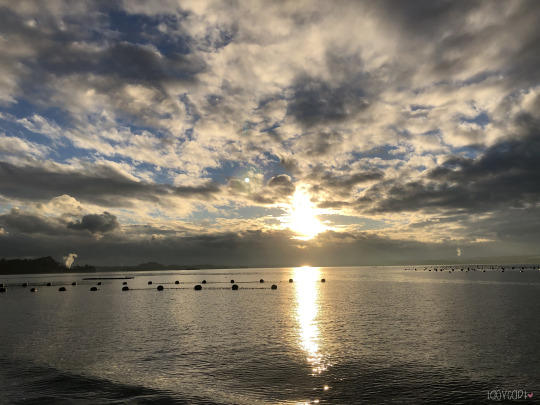



tokyo tohoku trip - day 5.
woke up early morning after a good night sleep for another great day out, my sleeping schedule was so good during this trip for some reason, haha... XD i went to the morning market nearby the hotel to have a look but they mostly sell fresh food and stuff for cooking, so i decided to get some breakfast from convenient store which i really want to eat.
after enjoying my breakfast at my hotel room, i decided to just pack and check out first, and leave my luggage with the hotel receptionist so that i don’t have to come back until i am ready to leave sendai tonight.
my first place to visit is the sendai castle ruins/aoba castle ruins 仙台城跡, which is up a hill. i went to the nearest train station and started to walk, it didn’t occur to me that i would need to hike up the hill until i reach there and saw the walking path. also, the shorter route was closed off because some trees fall on the road, so i had to hike up a longer route, it was totally unexpected and quite tiring. it’s a good thing that the weather is chilly and i just walk up slowly and take rests in between, and since there’s no car or not crowded at all, i had the whole path to myself.
the city view at the top of the hill is beautiful, as it is a sunny day, you can really see very far away and there’s also a group of people filming some dance video there, which is interesting to watch. while this place used to be the castle, you don’t get to see any castle as it was destroyed and was never rebuilt. there’s VR service available for tourist who is interested to see what it used to be like though.
i walked around a bit and found a shrine, which is always nice to visit. miyagiken gokoku shrine 宮城縣護國神社 is not huge, but a decent size and it also look quite nice, i bought some souvenirs for my friend and myself too. after exploring around for a while, i found out that there’s a bus service to take me back to town, so of course i took that and went back to sendai station for lunch.
as beef tongue is a specialty in sendai, i found that there’s a whole row of restaurants dedicated to gyutan at the station, i chose a restaurant that has good review and queued up for it as all restaurants there are packed and super crowded during lunch time. zenjirou たんや善治郎 has quite a simple menu with different cuts and quantity for their set meal, you also get white rice, yam and beef soup with the meal which is very nice. i ordered 4 pieces of thick cut gyutan and it was really really good, i like the simple flavor, the charcoaled taste and the chewy texture of the beef tongue, it goes very well with rice and the soup is quite li8ght and refreshing to complete the meal.
after a satisfying meal, i stop by the zunda saryo ずんだ茶寮 to get the edamame shake. this is also a popular item from sendai, it is very refreshing, sort of like fruit smoothie, but the bean taste is light and refreshing, i really do enjoyed this very much. they also sell some snacks and souvenir which you can buy and bring home.
for the afternoon, i took the local train to matsushima for a boat ride to check out the beautiful islands around matsushima bay 松島湾. apparently, this view is one of the most beautiful and highly recommended. i booked the boat ride ahead so there’s a discount, however, you can also buy tickets on the spot as well.
the boat has huge windows so you can sit inside and look out to enjoy the view while listening to the narration (in japanese), which is a very relaxing thing to do. there’s also a special cabin on the upper floor which require extra fees, so i didn’t go there. the other option is to go outside and enjoy the sea breeze which is fun and great for photos. the view is already very nice, and adding sunset to it make it even better as the water color just changes over time. it is definitely worth checking this out as it was beautiful and such a relaxing activity.
once we are back from the boat ride, i decided to visit a cafe before leaving, as i do still have time until my dinner appointment. shokado cafe 松華堂菓子店 is just by the seaside and they sell various kind of rice crackers, snacks and dessert as souvenir. i ordered hojicha with a kinako sandwich (soybean flour puff) きなこサンド to enjoy while looking at the sea and sunset. the cafe is not busy hence it is the perfect place to just chill and have a good time.
for dinner, shiogama is a nearby town where it is known to have the most sushi restaurants in whole of japan. and the fish here is super fresh and not being frozen because it is so close by to the sea. my friend helped me make a reservation at sushi shirahata 鮨 しらはた, and i reached there slightly earlier and the staff are super nice and friendly.
with my limited japanese, i managed to ask the chef for some recommendations and what is fresh and good for the day and picked out the food i want to eat. i ordered hotate and shirako (fish semen) for appetizer, sashimi and a sushi platter. the appetizer is actually amazing, there’s a difference in texture for the hotate (scallops) between the ones i enjoyed in aomori and this one. both of them is very good and there’s no fishy taste at all, in fact this is very refreshing with the sauce. shirako is a weird dish, but i quite like it as the texture is so smooth and soft.
sashimi is made of out three type of fish that the chef recommended, all of them have different texture and taste, which is very enjoyable, some lighter taste and some heavier, it’s just so so satisfying to have good sashimi that just give you a different sensation every bite.
sushi platter has 10 piece of sushi with a slice of tamagoyaki. each piece is made so beautifully the whole plate is like an art itself. there’s different type of tuna, local fish, hotate, uni, anago and more. during the whole meal, i had a good time chatting with the chef while he is preparing my food, i’m glad that i get to use my japanese, while it is no where near perfect, at least he did understand what i said.
the service here is really awesome, the restaurant was quiet and the ambiance was really comfortable. the meal also included a bowl of hot shrimp soup and pear sorbet at the end to complete the meal. the whole experience is amazing and definitely highly recommended as i do feel the quality of fresh fish is better here than in tokyo, and i do believe it is less pricey as well. i would love to be back again if there’s chance in the future.
heading back to sendai, i picked up my luggage from the hotel and also bought some souvenir from zunda saryo before boarding the shinkansen back to tokyo, which also marks the end of my tohoku exploration using my 5 days jr east pass. this pass is so worth it as i got to visit so many amazing places, i do love all the smaller towns and the scenery is just amazing. being able to see snow and play with snow is wonderful as well. there’s definitely so much more to explore as tohoku area is huge, so i would definitely like to visit again in the future.
for next day onwards, it’s gonna be tokyo and places around tokyo, to be continued...
#lagycart travels#lagycart in japan#sendai#morning market#convenient store#sendai castle ruins#aoba castle ruins#仙台城跡#hiking#autumn leaves#city view#myagiken gokoku shrine#宮城縣護國神社#souvenir#peaceful#good weather#gyutan#zenjirou#たんや善治郎#set meal#beef toungue#yummy#specialty#enjoyable#satisfying#zunda saryo#ずんだ茶寮#edamame#zunda shake#refreshing
3 notes
·
View notes
Video
youtube
🇯🇵2024 新年の初詣 札幌護国神社 参拝/日本 北海道 札幌市 中央区 [4K HDR Binaural ASMR]
#youtube#初詣#参拝#札幌護国神社#護国神社#中央区#札幌#北海道#日本#街歩き#散歩#散��#gokoku shrine#sapporo gokoku shrine#first visit of the year to a shrine#worship#chuo ward#sapporo#hokkaido#japan#walking#walk#stroll#happy new year 2024#2024
1 note
·
View note
Text
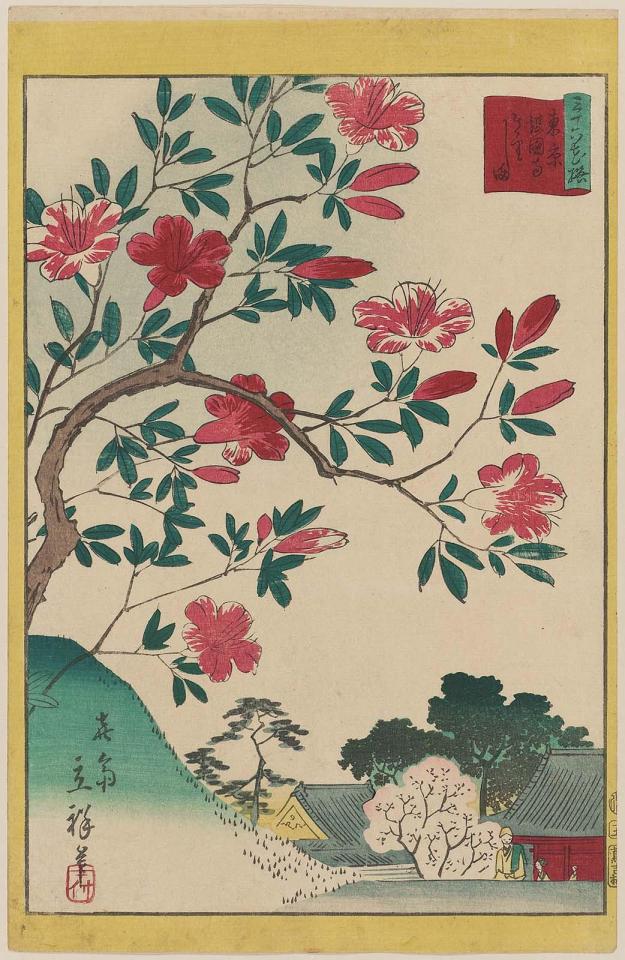
Kirishima Azaleas at Gokoku-ji Temple in Tokyo' (1866) by Utagawa Hiroshige II (Japanese, 1826–1869).
Woodblock print. Published by Tsutaya Kichizô.
Image and text information courtesy MFA Boston.
64 notes
·
View notes
Text

くらしのこと市 2023
ARTS&CRAFT静岡
illustration
12/9(土),10(日)に静岡縣護国神社で開催される「くらしのこと市2022」のビジュアルを担当しました。詳細はHPをご覧ください。
I did an illustration for “Kurashi no koto ichi 2023” which will be held at Shizuoka ken gokoku jinja on December 10th sat. and 11th sun. Market of mainly pottery and ceramics. More details on HP.
7 notes
·
View notes
Text
源自於祭祀護國英靈之地,現更成為了一個能舉辦婚禮的幸福之地,也是為能賞櫻、賞楓、賞銀杏的絕美神社的「兵庫縣姬路護國神社」!
#巡日#旅行#出國#神社#紅葉#楓葉#櫻花#銀杏#婚禮#護國神社#姬路護國神社#姬路#兵庫#兵庫自由行#巡日旅行攝#Japan#Travel#Shrine#Gokoku#ひめじ#ひょうご#にほんこく#RoundtripJp
1 note
·
View note
Text

Gokoku-Ji Cemetery
Bunkyō, Tokyo, Japan
#photographers on tumblr#architecture#nature#cemeteries#tokyo#japan#autumn#fall#gokoku ji cemetery#graveyard#graves#tombstones#tombs#forests#spooky season#halloween#original photographers#original photography
83 notes
·
View notes
Text
Happy MerMay

“it’s apparently MerMay a time to celebrate aquatic animals, so I’d like to give a shout out to the dolphin Friends who live between Kyusho and Gokoku they’re all really neat friends and they helped me a lot when when I was sailing from one island to another, I hope they’re doing well.”
2 notes
·
View notes
Photo


Tone will be impersonal, neutral, and informative.
ID Text in Keep Reading. Descriptions of regions in Keep Reading. Spoilers for KF (2015), KF (2017), KF2, and KF3 once you reach the region descriptions. Thank you to everyone who helped with this.
The following two photos consist of two Kemono Friends 3-era Japari Park maps. The first is unedited and directly from the game. The second got edited by Japari Park Companion to contain each known area name. Major credit to the fan-run Japari Library and its users for its titled maps over the years, referencing a couple.
As much as it attempts to avoid headcanon, please do not take it as absolute accuracy. These have no association with Japari Library or Kemono Friends Project outside of using their content as sources. All are free to sample it for their appropriate and KFP-friendly needs.
Kemono Friends 3 is not after Kemono Friends 2 or Kemono Friends 2017. It is an indirect sequel to Kemono Friends 2015, the original mobile game that started the franchise.
Japari Library Wiki’s own version of this map is on this page.
[ID: The first photo is a fictional map of Japari Park from Kemono Friends 3; it is on a cyan ocean background with a tan border:
The tan border has “Japari Park” written as a title. It is from an official mobile game that roughly takes place in a time known as Generation 2 in Japari Park. Japari Park is an archipelago; with several islands surrounded by water and near each other. Japari, in full: is one large island and six smaller ones. Japari’s geographical landforms are based on real-life Japan but are still fictional. It is often described as a large open zoo far from the world’s continents.
The second photo is an identical map - but is this time edited to list several of the geographical regions, being:
Park Central.
Sankai.
Nakabe.
Rikuhoku.
An’in.
Anyo.
Gokoku
Kyōshū.
Akushima.
Riukiu.
Hokkai.
And finally, Hōtoku.
The contents and appearances of these regions go as follows:
Park Central.
Being the bottommost middle part of the main island, Park Central can be described as an equivalent to the real-life Japan’s Kanto Region with a capital also known as “Park Central” akin to real-life Tokyo. The region is known for its green forested scenery. Park Central’s capital resembles a huge circular theme park surrounded by a large wall.
Said capitol has rides such as Ferris wheels, structures such as the Kemono Hospital, and attractions such as the Japari Park Pavilion and the vast Kemono Castle. Earlier into Gen 2, said castle was occupied by the defunct original mobile game’s antagonist, the Cellien Queen, resulting in its destruction until being repaired in Kemono Friends 3.
According to the fan-site Japari Library, not the location of Japari Library, by the time of Kemono Friends 2, Gen ?, around Park Central somewhere are the Azura Park bamboo grove, the cruise-able stage show inhabited coastal aquatic Marine Life Park, the densely tree-covered Jungle Park with a nearby research lab, the scorching cactus-strewn tropical savanna South Maerica Park, and the whale-shaped Japari Hotel, all connected to the Japari Line monorail service. The monorail was still under construction around early Kemono Friends 3, Circa Gen 2.
Sankai Region.
Being a part of the main island to the left of Park Central, Sankai can be described as an equivalent to Japan’s real-life Kansai Region. The region is notably home to various caves and is known for its tannish and sandy desert scenery. Notable locations of the said region include Oasis No. 1, the region’s primary water source. And an expansive underground shopping mall called the Odyssey.
Due to its harsh climate, several roads dot it that occasionally pass-through tunnels. Following an incident during Kemono Friends 3, disrepair temporarily fell upon the Odyssey. During Kemono Friends 3 as well, there was a Japari Museum, a massive warehouse. The Sankai Region is occasionally described by the name of the Desert Area.
Nakabe Region.
Being a part of the main island above Park Central, Nakabe can be described as an equivalent to Japan’s real-life Chubu Region. The region is known for its largely swampy, brown, and green waterfront scenery. Notable locations of the said region include the renowned Amatatsu Waterfall and the nearby mechanized “Undine” water treatment plant in Serenity Jungle. It is most known for the extensive concert venue located inside the region. The Nakabe Region is occasionally described by the name of the Waterfront Area.
Rikuhoku Region.
As part of the main island, not much is known about the Rikuhoku Region by the Japari Park Companion team. On the map Rikuhoku is located near mountains and has green mountain scenery. It is close to Nakabe.
An’in Region.
Being the farthest left part of the main island, An’in can be described as equivalent to real-life Japan’s San-in Region. The region is known for its sometimes mountainous, other times densely forested, and infrequently open green jungle scenery.
Notable locations of the said region include the vital An’in Ferry Terminal and the Japari Park Security and Research Team headquarters that acts as JSRT’s main base. In Season 3 of Kemono Friends 3, by referencing the An’in Ferry Terminal in-game collectible photo, the Ferry Terminal may be the one notable for being the perceived site of the first long-term guest to Japari Park, Hikari. The An’in Region is occasionally described by the name of Jungle Area occasionally as well as Forest Area.
Anyo Region.
As part of the main island, not much is known about the Anyo Region by the Japari Park Companion team. On the map Rikuhoku is located near mountains and has green mountain scenery. It is close to An’in.
Hōtoku Region.
Being the farthest right and the last currently recorded region on the main island, Hōtoku can be described as an equivalent to Japan’s real-life Tohoku region. The region is known for its often cloudy and broad green high mountain scenery. Notable locations of the said region include sites for holding sky races. It is often known as the Sea of Clouds by inhabitants and visitors alike. The Hōtoku Region is also occasionally described by the name of Sky Area.
Gokoku Region.
Being the closest smaller island to the left mainland shores of the An’in Region, Gokoku can be described as an equivalent to Japan’s real-life Shikoku region. The region is known for its varied climates and sometimes mountainous, occasionally cavernous, largely green open scenery, lush forests being the most common of them during Kemono Friends 3.
Notable locations of the said region include sites for holding art festivals, sites for producing independent films, and the presumed headquarters of the Japari Park Guard Team. Due to the positioning of the archipelago - in Chapter 4 of Cellval's Hang Out Story in Kemono Friends 3, it could potentially be the site of the Chinatown-Esque Japari Night Market, although it could not be.
Kyōshū Region.
Directly below the island region of Gokoku and the left mainland shores of the An’in Region, Kyōshū can be described as an equivalent to Japan’s real-life Kyūshū region. During the times of the defunct original mobile game in early Gen 2, Kyōshū was well known for being a collection of mild grasslands. But by the time of Gen ? Sandstar had morphed and split the region into at least ten to eleven or more distinct climate areas with a colossal Sandstar volcano in the middle.
Notable splits of the said region include the Savanna Area, the Jungle Area, the High Mountain Area, the Desert Area, the Waterfront Area, the Plains Area, the Forest Area, the Snowy Mountains Area, the Ocean Area, the Tropics Area, and the Sandstar Volcano Exterior.
Notable locations of the said region include the Savanna Area Mountaintop Watering hole, the Savanna Area Gate to the Jungle Area, the Jungle Area Tour Walkaway, the Jungle Area An’in Bridge, the High Mountain Area Mountaintop Japari Café, the Desert Area Underground Roadside Tunnel, the Desert Area Underground Labyrinth, the Waterfront Area Lake Shore, the Plains Area Castle, the Plains Area Dojo, the Forest Area Japari Library, the Waterfront Concert Venue, the Snowy Mountain Hot Springs, the on the way from the Snowy Mountains Area to Hinode Port Lodge, the Sandstar Volcano surrounding Hinode Port, the Sandstar Volcano far-off surrounding Amusement Park, and finally the Sandstar Volcano itself.
Additionally, there is a Japari Museum, a massive warehouse, and in circa Gen 2, replacing the Gen ?-era Café is the High Mountain Area Mountaintop Japari Cabin. The Gen 2 Japari Café‘s location is currently not recorded.
Akushima Region.
Directly to the right of the island region of Kyōshū and below the in-between between the middle mainland shores of Park Central and the Sankai Region, not much is known about the Akushima region by the Japari Park Companion team. On the map, Akushima is the smallest island and has green scenery. In the defunct original mobile game, there are some forests with large trees, a few mountains, and an open shore.
Riukiu Region.
To the lower left of the island of the Akushima Region and below the mainland shores of Park Central, the Riukiu Region can be described as an equivalent to Japan’s real-life Ryukyu Region. The region is known for its palm tree-strewn green climate and tropical sandy beach scenery.
Notable locations of the said region include Riukiu Aquarium, the Starry Sky Data Library, a Japari Café, and the Shiserval Dojo. And by at least Kemono Friends Festival, similar to Kyōshū, Riukiu is home to Area splits of its own. The eight are the Tropics Area, the beach-filled Ocean Area, the shipwreck-strewn droughted Desert Area, the Jungle Area, the High Mountain Area, the Lake Shore, the Snowy Mountains Area, and the Savanna Area.
Hokkai Region.
Being the closest smaller island to the right mainland shores of the Hōtoku Region, the Hokkai Region can be described as an equivalent to Japan’s real-life Hokkaido Region. The region is known for its harsh tundra climates adorned with frozen over huddles of water, scattered hot springs, and mountain scenery.
Notable locations of the said region include the Tsubekuri Snowfield, various cabins, and one Hot Spring near a Sandstar volcano in the vicinity. The Hokkai Region is occasionally described by the name of Snowfield Area.
End ID.]
#Kemono Friends#Kemofure#Kemono-Friends#Japari Park#ID#ID Text#ID Text in Keep Reading#Lore#Japari Park Companion to Japari#Fictional Map#Kemono Friends Project#Textwall#Textwall in ID#Kemono Friends Spoilers#Kemono Friends 2 Spoilers#Kemono Friends 3 Spoilers#Japari Park Companion#Longpost
4 notes
·
View notes
Photo

"Alchemy of Souls" Lee Jae-wook "Foot smoke No. 1? A little surprised you didn't act."
3 notes
·
View notes
Text
Toonami Weekly Recap 10/01/2022
Housing Complex C EP#01 - Optical Illusion: After Kimi complains about the heat, the elders look for an ice machine in a secret storage cellar and find other surprises. Later, Kimi brings Yuri down there and they find drawings belonging to a hikikomori. They return his pen to him and he draws a cute picture of the two. Later Kimi comes to invite him to have shaved ice and accidentally steps on his anime figurine. However, when she looks through the door something appears to be wrong.
Yashahime: The Second Act EP#33 (09) - Mayonaka the Visitor: Riku utilizes Towa's lavender-scented hand cream to fix his eyes, which turn them from dark green to a light lavender. He claims that this is a good thing as Kirinmaru will no longer be able to see exactly where they are anymore though his eyes. At Mamidaira Island, Moroha is easily beaten by the two-rogue raccoon-dogs, despite her bragging that her evolved Beniyasha form was now "new and improved." Takechiyo and Hachi take shelter in a cave as Moroha sleeps from the use of her deceased paternal grandmother's shell rouge once more. Still continuing their expedition in Gokoku Village, the Demon-Slayers try to find a way to stop the Flame Bulls and finally appease their master Mayonaka the "demon god" deity. Setsuna ends up learning Mayonaka's full story, that he is just a deity who had been deceived by the villagers and even the headman's daughter, Oharu, whom he had fallen for. Wanting to help him move on from his sorrow, Setsuna utilizes her Yukari no Tachikiri to cut Mayonaka's light golden thread of fate from his treasured possession, the Blessing of the Five Grains. Once she does, the shine crumples to reveal Oharu's long-dead body (who had used as sacrifice) which shocks Mayonaka. Finally understanding what had transpired, he hugs his human love and leaves with her spirit to enter the Afterlife. As the demon-slayers depart, Setsuna begins to feel a strange sensation and wonders what it could be.
Lupin the 3rd Part 6 EP#22 - My Mother's Documents: A young woman named Finn Clarke travels to Revonland in the Arctic to learn more about her mother who died after giving birth to her 16 years ago to the day. She stays with Daniel and Anna who had watched over her mother, Mariel, after she suddenly left for America. Using her mother's diary and pictures, Finn learns that in high school, Mariel had a crush on a football player named Sean and dated another boy named Allen. She finds some cassettes recorded by Mariel and decides to reveal them publicly as a webcast called "Finn's Room" which are heard by both Lupin and Mattea. The tapes reveal that Mariel split with Sean and became pregnant with Allen, with Tomoe using hypnotic suggestion to make her believe they were always close to each other. The final tape reveals in a call with Sean that Allen had assaulted Marie, with surveillance footage at the time showing the two boys arguing and then being shot by another of Tomoe's "students", who then kills herself on her instructions. As Finn goes into shock, Lupin rushes in and consoles her, while wondering about Tomoe's motivation. As he leaves, he encounters Zenigata, who is in pursuit of Mattea.
Slightly Damned Page 1072: https://www.sdamned.com/comic/1072
youtube
#Toonami#Toonami Weekly Recap#Toonami Open#Housing Complex C#First Episode#Yashahime: Princess Half Demon#Yashahime: The Second Act#InuYasha#Lupin the 3rd#Lupin the 3rd Part 6#Witch and Gentleman#Slightly Damned
2 notes
·
View notes